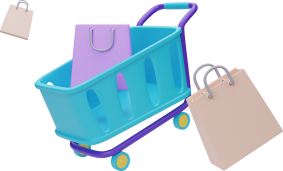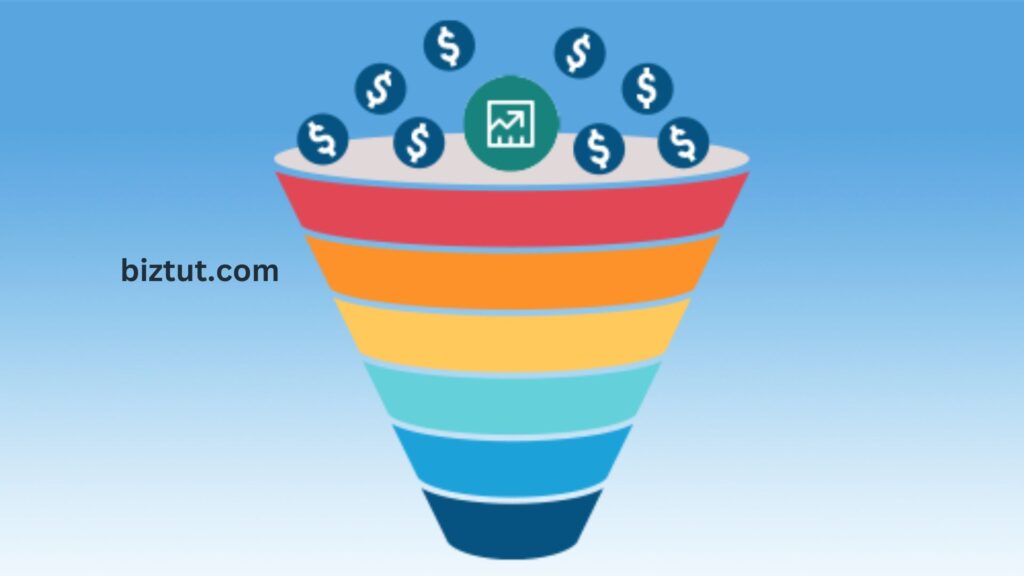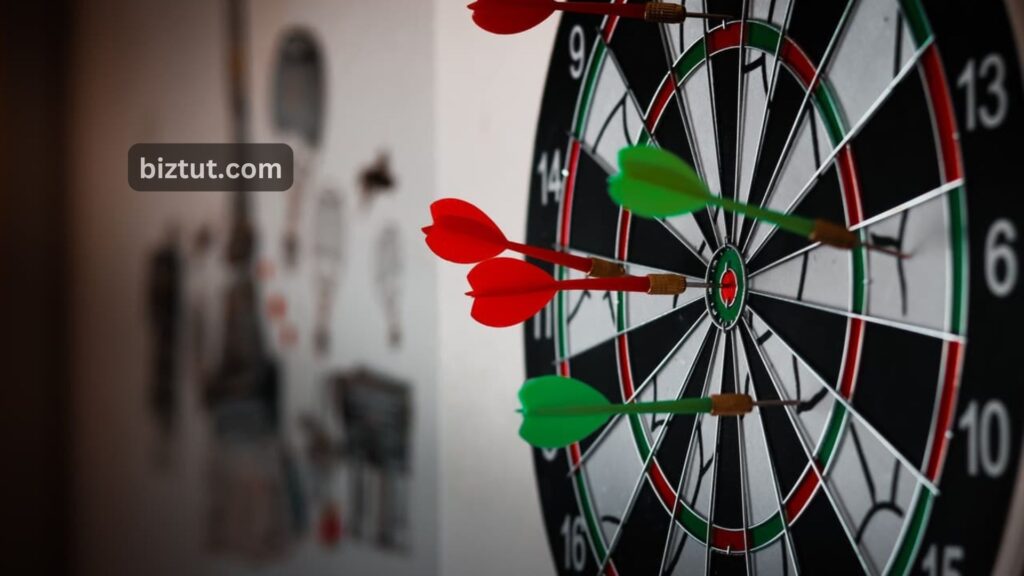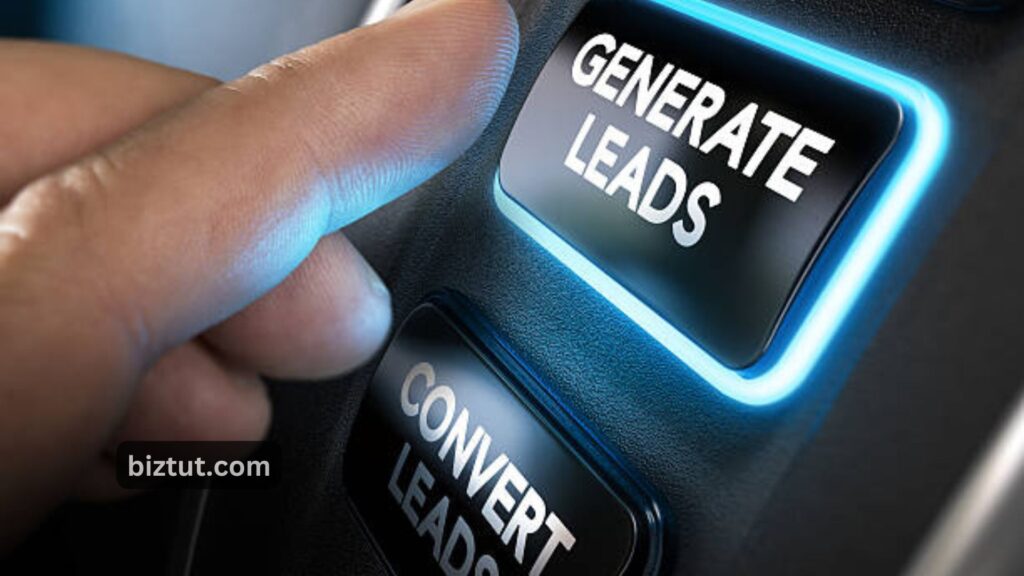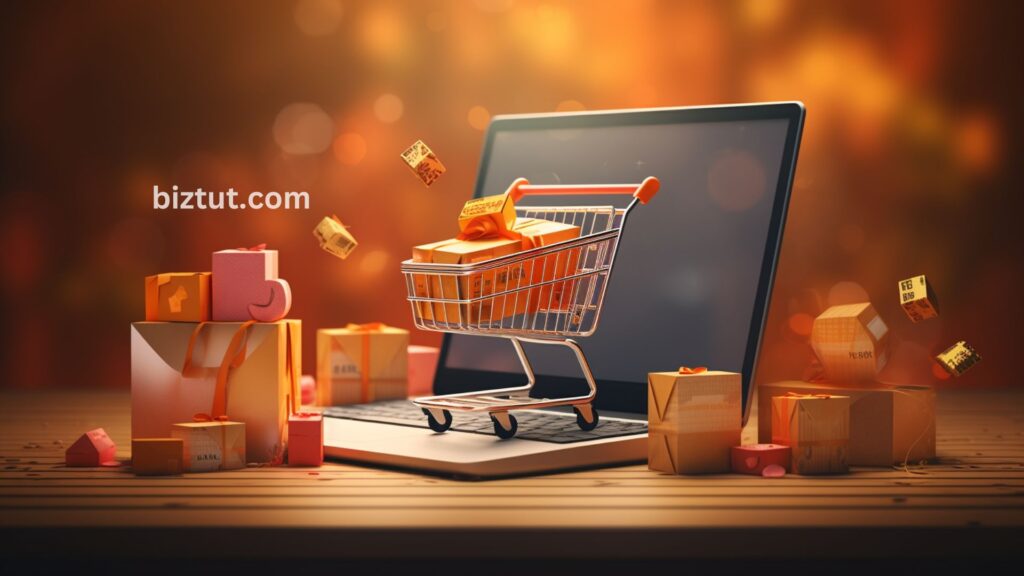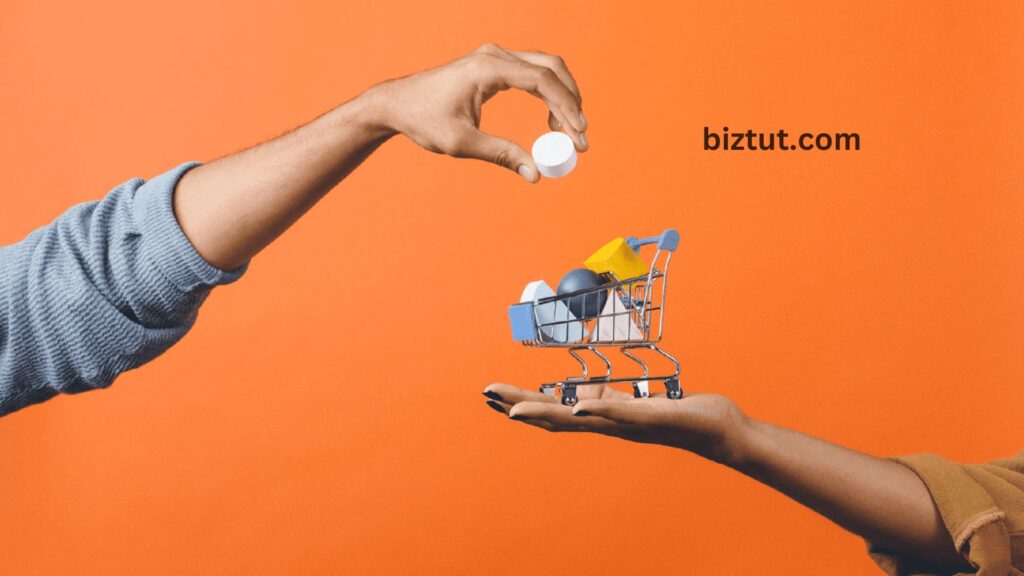Have you ever thought about the path your customers take before they finally make a purchase from your business?
This path, often called a sales funnel, shows all the points where your customers interact with your brand before they’re ready to buy. To create a winning sales strategy, your sales funnel needs to be solid.
The main goal of your sales funnel is to guide people through each stage until they’re ready to make a purchase.
In this article, I cover everything you need to know about sales funnels—what they are, how to build one, and what kind of content works best at each stage.
What is a Sales Funnel?
A sales funnel is a simple way to visualize the steps a customer takes before making a purchase. It’s called a funnel because, at the top, lots of people might show interest, but only a small number actually end up buying. The funnel usually has stages referred to as the top, middle, and bottom, depending on how a company’s sales process works.
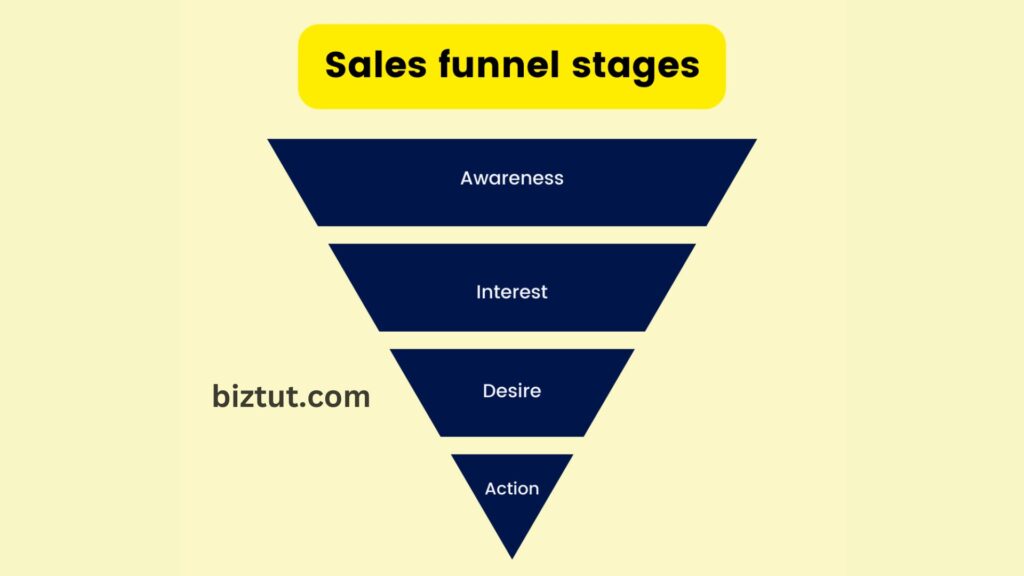
As people move through each stage of the funnel, they’re showing a stronger commitment to making a purchase. Most businesses—whether online or physical—use this model to guide their marketing efforts at every stage.
The four basic stages of a sales funnel are:
- Awareness
- Interest
- Desire
- Action
Before diving into these stages, let’s first talk about why having a sales funnel is so important.
Why do you need a Sales Funnel? 6 Benefits
Creating and using sales funnels comes with plenty of benefits for turning leads into paying customers. Here are six key advantages:
- A focused sales and marketing strategy
Customers can reach out at any point in their buying journey, whether they’re just researching or ready to decide. It’s crucial to have your marketing and sales efforts aligned, so they get the information they need—even when a salesperson isn’t directly involved. With a good sales funnel in place, you can provide the right offer at the right time, even outside of direct sales conversations. - The right message at the right time
A sales funnel helps you understand where your potential customer is on their journey and provides them with relevant content for that stage. For example, if someone is just learning about your brand (the Awareness stage), they might need blog posts, infographics, or checklists to get to know you better. For leads who are closer to buying (the Desire stage), things like product overviews, webinars, and case studies will help them take action. - Saves time and effort
With a full sales funnel, your marketing and sales strategies will be aligned, and you’ll save time by creating content tailored to each stage just once. For example, you can write a blog post that addresses a specific problem for prospects in the Awareness stage, or design lead magnets that are perfect for those in the Desire stage. - Increased sales
When you nurture leads as they move down the funnel, you increase the chances of closing a sale. In fact, nurtured leads can generate 47% more sales than non-nurtured ones. So, it’s worth optimizing your funnel to fix any pain points and guide your leads smoothly toward the final purchase. - Improved forecast accuracy
A well-structured sales funnel can help you predict future revenue. By tracking metrics like conversion rates at each stage, you can estimate how many leads will convert and multiply that by the average deal size to create a sales forecast. This gives you a clearer idea of your future sales.
In short, having a well-designed sales funnel helps you deliver the right message at the right time, save effort, boost sales, and even improve your ability to forecast revenue.
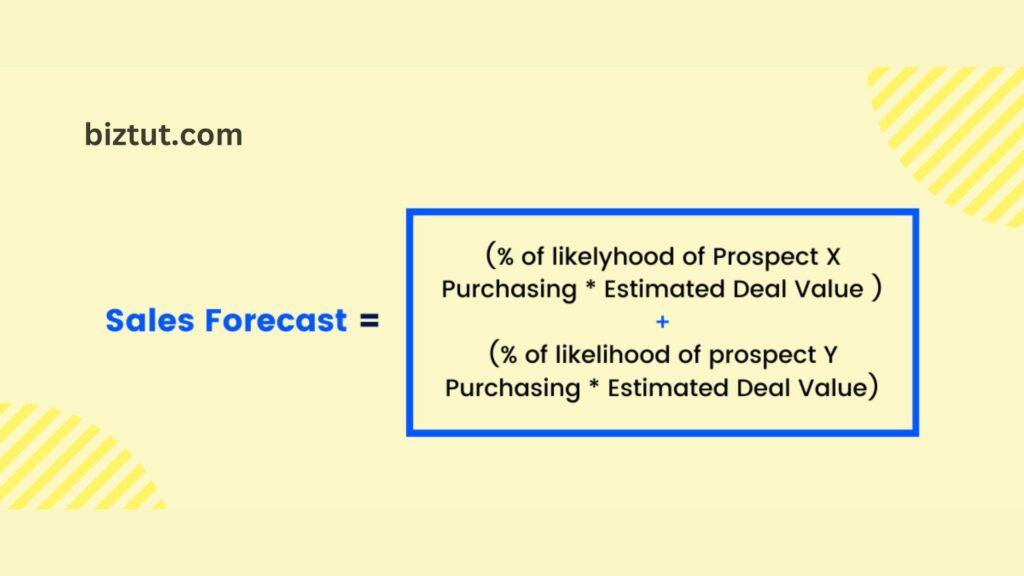
Understanding the Sales Funnel Stages
From the moment someone first hears about your brand to when they finally make a purchase, they go through different stages of your sales funnel. This journey can vary depending on your target audience, your industry, and the products or services you offer.
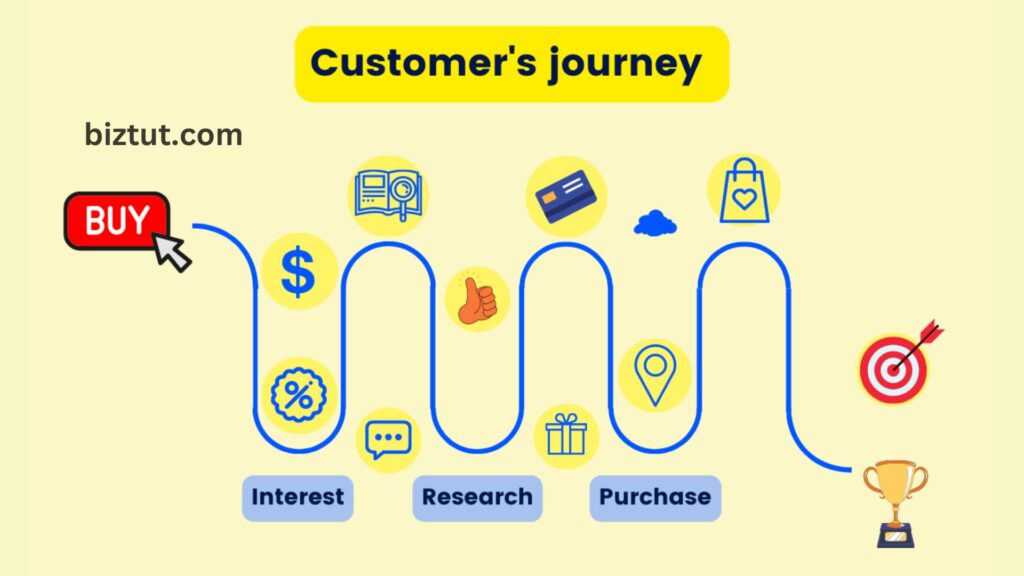
Before you start building your sales funnel, it’s important to have a clear vision for your business, create a solid eCommerce marketing strategy, and define your target audience. These steps will help guide your business growth. For example, if you’re thinking about starting an online clothing store, you might want to work with a digital marketing agency to help grow and sustain your business.
You can customize your sales funnel with as many stages as you need, but typically, there are four main stages that most funnels follow.
What are the sales funnel stages?
Here’s a breakdown of the four main stages of a sales funnel in simple terms:
- Awareness
This is the very first stage, where people learn about your product or service for the first time. They might also realize the problem they need to solve and start exploring solutions. They could discover you through an ad, a Google search, social media, word of mouth, or other traffic sources. For example, a prospect might come across your ad or find your website through a search. - Interest
Once someone knows about your brand, they’ll start evaluating it based on their level of interest and the solutions you offer. At this stage, the prospect is actively searching for ways to solve their problem. They’ll compare your product to others, checking out reviews and doing research to see if you’re the best fit for them. - Desire
Now that the prospect understands what you offer, they’ll dive deeper into details like pricing and packaging. They’re considering whether your product is the right choice for them. Helpful resources at this stage include sales pages, webinars, or even direct calls to help them make a final decision. - Action
This is the crucial stage where the prospect decides whether or not to make a purchase. Even if they don’t buy from you right away, it’s not a lost cause. You can follow up with nurture campaigns to keep your brand on their mind for future purchases.
Customer Retention — Important Part of Sales Funnel
Once you’ve got a customer on board, it’s crucial to keep them happy so they stick around and even become loyal advocates for your brand. Happy customers are the best at spreading the word, and word of mouth is incredibly powerful.
To keep your customers satisfied, focus on helping them with any issues or challenges they face related to your product or service. You want them to stay engaged, and you can do that by sharing valuable content like:
- Emails
- Special offers
- Surveys or follow-ups
- Product usage guides
- Customer feedback forms
- Tech support materials
Keeping them engaged and supported will boost their loyalty and encourage them to recommend you to others.
How does a Sales Funnel Works ?
Let’s imagine you own an online bookstore. You know your target audience is mainly on Facebook, consisting of both men and women aged 20 to 50.
To attract them, you create a landing page with a sign-up form where visitors can enter their emails in exchange for a freebie—let’s say the first ten pages of a new novel.
You run an ad on your Facebook page that directs people to this landing page. When prospects enter their email addresses and download the free pages, you’ve turned them into leads, moving them further down your sales funnel.
Now, it’s time to nurture those leads! You can send them emails with educational content about books, updates on upcoming releases, or DIY tips for building bookshelves. All of this information helps keep your audience engaged.
At the end of your email campaign, you offer a 10% discount on their first order. Suddenly, your sales start to soar, and those leads turn into paying customers!
But you don’t stop there. Keep sending out helpful content, like ideas for bookshelves, tips on caring for their books, or gift suggestions. This keeps them coming back for more.
So, that’s how a solid sales funnel works: it guides prospects through each stage until they become loyal customers.
To recap, here are the four stages of your sales funnel:
- Awareness: You created a Facebook ad to attract people to your landing page.
- Interest: You offered something valuable in exchange for their email addresses.
- Desire: Your content educates them and prepares them to buy.
- Action: You offer an irresistible coupon and continue marketing to boost customer retention.
If you want to see more examples of how sales funnels work, check out this blog post featuring six real brand examples!
How to build a sales funnel from scratch ?
To really understand your audience, the best thing you can do is talk to them. The more you learn about your customers, the better your sales funnel will work.
Remember, you’re not trying to market to everyone; you’re focusing on the people who will truly benefit from what you sell. This lets you tailor your funnel to highlight what matters most to them. Plus, you might discover ways to improve your products or services.
Here are some important questions to ask your customers:
- What challenges are you currently facing in [your area]?
- What fears or frustrations do you have?
- What are your goals and dreams?
- What have you tried to solve your problems or reach your goals?
- How well did that work for you?
With this information, you can create content for each stage of your sales funnel to help guide prospects through the process. You can also use content marketing tools to make your content stand out.
2. Capture Your Audience’s Attention
For your sales funnel to work, you need to attract prospects. If no one is interested in your business, your funnel won’t do much. So, you need to put your content in front of your target audience.
Consider hiring a content marketing or SEO agency to help. They can post a variety of engaging content across your platforms, like infographics, videos, and social media posts. Organic traffic can come from:
- SEO
- Social media (non-paid)
- Referral traffic (links from other sites)
- Direct traffic (people who already know your brand)
You can also add forms and pop-ups to your website to capture leads. Running ads or manually reaching out to prospects is another option. If you’re in the B2B space, LinkedIn ads or prospecting might be a great fit. And don’t forget to try A/B testing to see what works best!
3. Build a Landing Page
Landing pages often get a bad rap, but they’re still a must-have! Why? Because they have the highest conversion rates—about 24%.
Your ads and content should lead prospects to a landing page with a tempting offer. When they click on an ad, sign up for a webinar, or download an eBook, they should be directed to this page.
Make sure your landing page clearly shows who you are and what makes you unique. Focus on capturing leads instead of pushing for sales. This could be your one chance to impress them!
Include a form for them to enter their info, like their email address, so you can keep in touch. Also, have a clear call-to-action (CTA) that tells them what to do next—like downloading a free eBook or reading a blog post.
4. Offer Something Valuable
When leads land on your page, don’t just ask them to buy something right away. Instead, motivate them to take action by offering discounts or coupon codes. You could also give them access to exclusive content once they make a purchase. Creating a sense of urgency can boost sales by 6% to 9%, so make your offers time-sensitive!
5. Nurture the Prospect
To make your sales funnel effective, you want as many prospects as possible to reach the end. This means nurturing them at the top of the funnel (Awareness and Interest stages).
Make interactions with your brand meaningful by providing valuable content, like how-to guides, eBooks, checklists, and case studies. Involve your customer support team to help prospects get the most out of your products.
6. Create an Email Drip Campaign
Now that you have leads from your landing page, it’s time to communicate with them to close the deal.
Use email marketing to provide engaging and helpful content. Send updates regularly—maybe once or twice a week, depending on your audience. Start by educating your prospects rather than promoting your products right away.
Ask yourself:
- What do they want to learn?
- What objections do they have that you need to address?
At the end of your email campaign, make an incredible offer they can’t resist. This will encourage your leads to take action and make a purchase.
7. Keep the Communication Going
Once your prospects become paying customers, don’t forget about them! Continue to reach out with useful content. Thank them for their purchase and keep them updated on promotions or sales. Engage them in your social media strategy to build a community and foster trust and loyalty.
8. Upsell, Cross-Sell, and Downsell
If your customers are ready to buy or have already made a purchase, consider inviting them to buy additional products. You can cross-sell by promoting related items.
If they seem hesitant about higher-tier offers, consider downgrading the offer to make it more appealing.
9. Optimize Your Sales Funnel
An unoptimized sales funnel can hurt your revenue. Here’s how to make sure yours is working at its best:
9.1. Research Your Audience
Understand your target audience well. Create buyer personas that will help you connect with prospects later.
9.2. Create Measurable Goals
Use Google Analytics to set measurable goals, like bounce rates and session durations. You can also invest in a CRM tool to manage prospect information and track marketing campaigns.
9.3. Analyze and Test Your Landing Pages
Check your landing pages to make sure they engage prospects effectively. Use A/B testing to see what works best and make sure your pages load quickly.
9.4. Stay Active on Social Media
Many visitors may come from social media, so maintain a strong presence there. Use social media to cover every stage of the sales funnel, from building brand awareness to making sales.
9.5. Make Use of Social Proof
In today’s world, people want to know they’re making a smart purchase. Use testimonials and positive reviews on your landing pages and website to build trust. Collect feedback through surveys to enhance your credibility.
9.6. Keep Your CTA Strong
Your call-to-action buttons are crucial for conversions. Make sure they stand out with bold text and eye-catching colors. Pay attention to where you place them, as visibility matters!
With these steps, you can create a more effective sales funnel that attracts, nurtures, and retains customers!
Principles of Persuasion for Effective Sales Funnel
Dr. Robert Cialdini, a marketing and psychology professor, introduced six principles of persuasion in his 1984 book, Influence. Here they are:
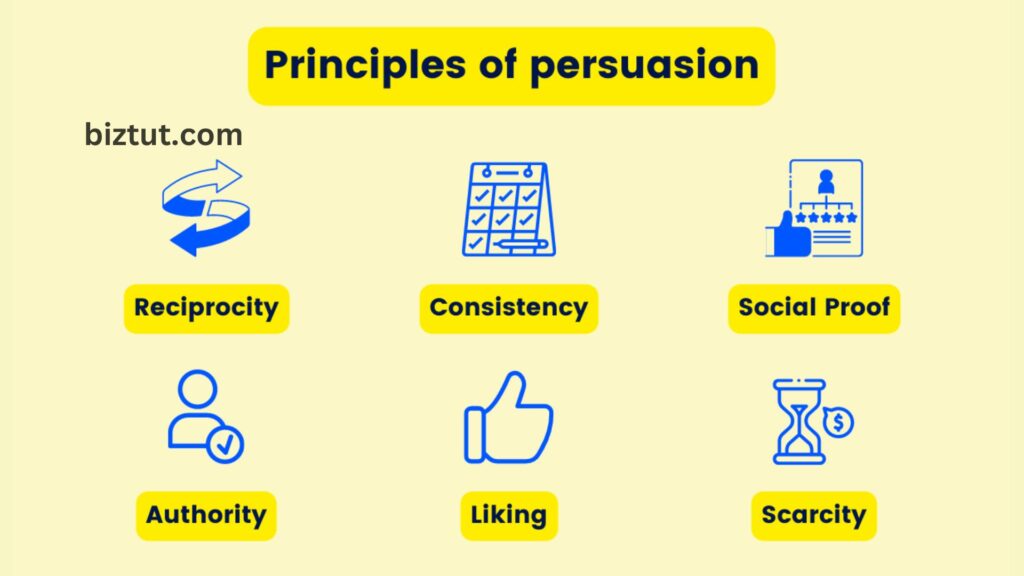
- Reciprocity
- Consistency
- Social Proof
- Liking
- Authority
- Scarcity
So, how do these principles work? According to psychologist Dr. Kendrick, we’re more likely to follow someone’s suggestion if we see them as an expert (authority), feel a connection with them (liking), believe we owe them something (reciprocity), or if it aligns with our values (consistency). We also tend to choose options that seem popular (social proof) or that involve something rare (scarcity).
You can use these principles to help move prospects through your sales funnel. For example:
- Awareness: Offer freebies like guides, checklists, or PDFs to leverage reciprocity and consistency. Regularly blogging or posting on social media builds awareness and shows you’re consistent.
- Interest: Use the principles of liking and scarcity to grab attention. People are more interested in you if they like you or think you’re offering something limited.
- Decision Stage: If prospects view you as an authority, they’re more likely to listen. Build your authority with case studies, webinars, and tutorials.
- Action Stage: You can close more sales by using social proof. Share reviews, testimonials, and positive media coverage to show that others trust you.
By applying these principles, you can effectively guide prospects at every stage of your sales funnel!
How to Create Content for Each Stage of The Sales Funnel
One of the biggest mistakes marketers make is not matching their content marketing efforts with the stages of their sales funnel. This can really hurt their chances of closing more deals. Often, they don’t dig deep enough or explore great opportunities, like repurposing their existing content to reach more people. As a result, their prospects get stuck and don’t move through the funnel. What they really need is a sales strategy tailored for each stage to engage effectively.
That’s why I want to share how you can use different types of content for each stage of your sales funnel!
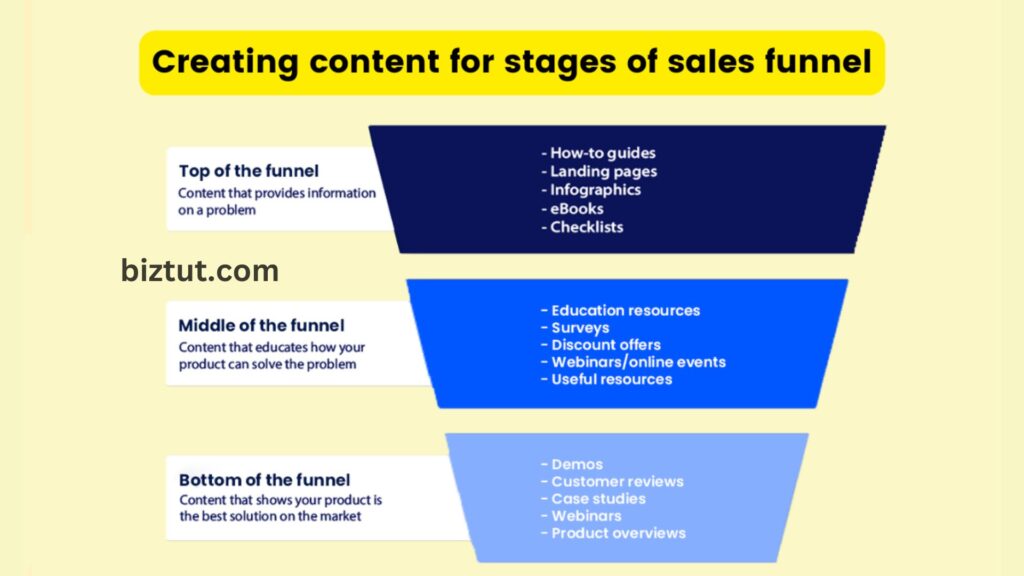
Blogging (Awareness and Interest)
Blogging is a great way to create awareness and interest in your business. It can be a major source of traffic for your website and a fantastic way to engage with your audience by sharing valuable content.
To generate awareness through blogging, you should optimize your posts with the right keywords. This helps attract your target customers through organic searches. Getting customers is crucial for a strong marketing funnel that captures attention and turns viewers into buyers.
You can also promote your blog posts on social media, encouraging others to share them or using paid promotions. Just keep in mind that blogging isn’t a “bottom of the funnel” activity. In other words, it won’t directly lead to sales. For that, you’ll need to create different types of content or encourage people to schedule a sales call with you.
Lead Magnets (Interest)
Lead magnets are great tools to spark interest in your product. You can grow your email list by offering something valuable that your audience already wants, like a guide or a course.
Anything that helps educate your prospects on how to solve their problems or reach their goals works well at this stage. Inside your lead magnets, you can also include calls to action, encouraging them to check out your products or get in touch with your sales team.

Webinars (Decision and Action)
Webinars can definitely be used as lead magnets, but they’re really more about helping people make a decision and encouraging them to buy your products.
When someone signs up for a webinar, it usually means they’re keen on reaching a specific goal, like boosting their website traffic, losing weight, or finding the right partner.
Your aim during the webinar should be to educate them while also motivating them to consider your solution.
At the end, always include a clear call to action—whether it’s to buy your product, start a free trial, or request a consultation.
Videos (Awareness, Interest)
Videos are really effective for the awareness and interest stages, but they can also work well for helping people decide and take action.
Since YouTube is the second-largest search engine, optimizing your videos with the right keywords can bring a lot of traffic to your website.
You can also use platforms like Wistia to add educational videos to your blog posts and website, helping your audience learn about topics they care about.
Creating explainer videos can spark interest in your products or services. Plus, sales videos can encourage people to make that final purchase. Don’t forget about tutorial videos, either—they’re great for keeping customers engaged by showing them how to use your products.
If you have a YouTube channel, or even if you’re just starting one, it’s a great place to share sales videos and connect with your audience.

Also Read: 10 Ways to Streamline Business Processes in 2024
Metrics to measure for the success of your sales funnel
As your business grows, your sales funnel might need some adjustments. With more data about your audience, you’ll get to know your customers better and can expand your products and services.
A smart way to measure how well your sales funnel is working is by tracking your conversion and retention rates. For instance, how many people join your email list after clicking on a social media ad?
Pay attention to each stage of your sales funnel:
- Are you catching enough people’s attention with your educational content?
- Do prospects trust you enough to share their contact info?
- Are your email campaigns leading to purchases?
- Are your current customers returning for more?
Measuring your sales funnel’s effectiveness helps you make decisions based on data instead of guessing. Here are a few key metrics to track that can help you set goals and identify any issues:
- Leads
Leads are the reason your sales funnel exists. Keeping an eye on the number of leads can help you align your marketing and sales strategies. Also, look at how long it takes for leads to move to the next stage to spot any roadblocks. Check where your leads are coming from, too—understanding your sources can help you improve your top-of-the-funnel activities. - Conversion Rate
Ultimately, what matters is how many leads turn into sales. To find your conversion rate, divide the number of sales by the total number of leads. A good target is usually between 3.1% and 5%. - Acquisition Costs
Acquisition costs include all the marketing and sales expenses involved in gaining leads and customers. To calculate the lead acquisition cost, divide the total costs by the number of leads. For customer acquisition cost, do the same with the total number of customers. - Customer Lifetime Value (CLTV)
CLTV helps you understand how effective your business is over time. It shows how much a customer typically spends compared to what it costs to acquire them. To calculate CLTV, multiply the average customer value by the average customer acquisition cost. - Total Sales
To see how your funnel activities translate into revenue, calculate total sales. Just add up all the revenue for the time period you’re looking at. - Average Deal Size
Average deal size tells you how much a customer usually spends on your products. This is important for seeing if your sales are growing or shrinking. To find this number, divide the total revenue by the number of deals.



